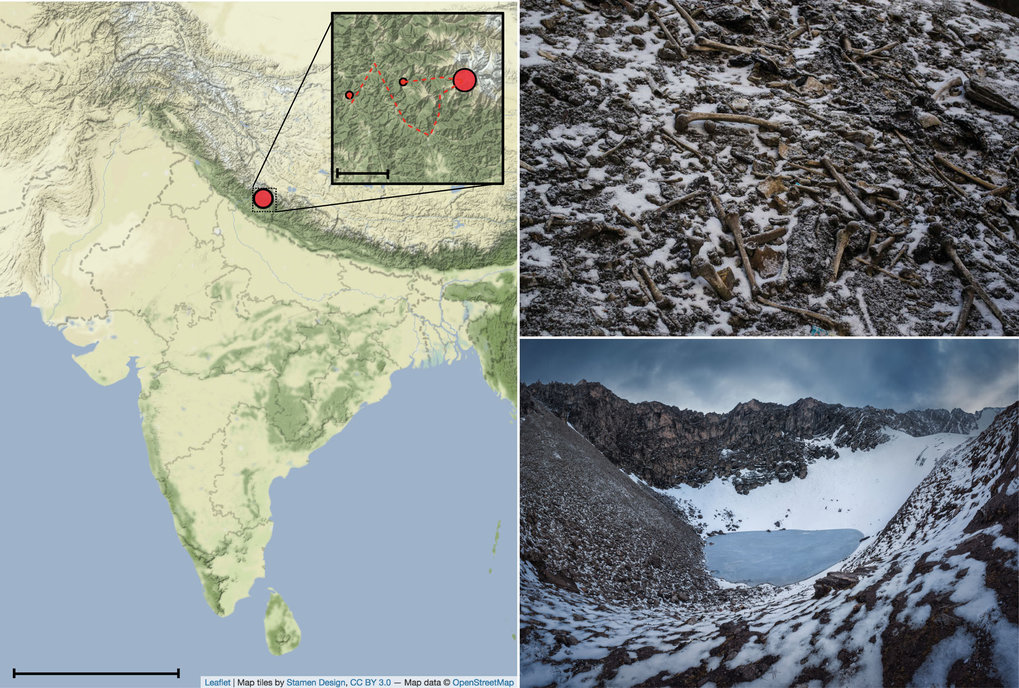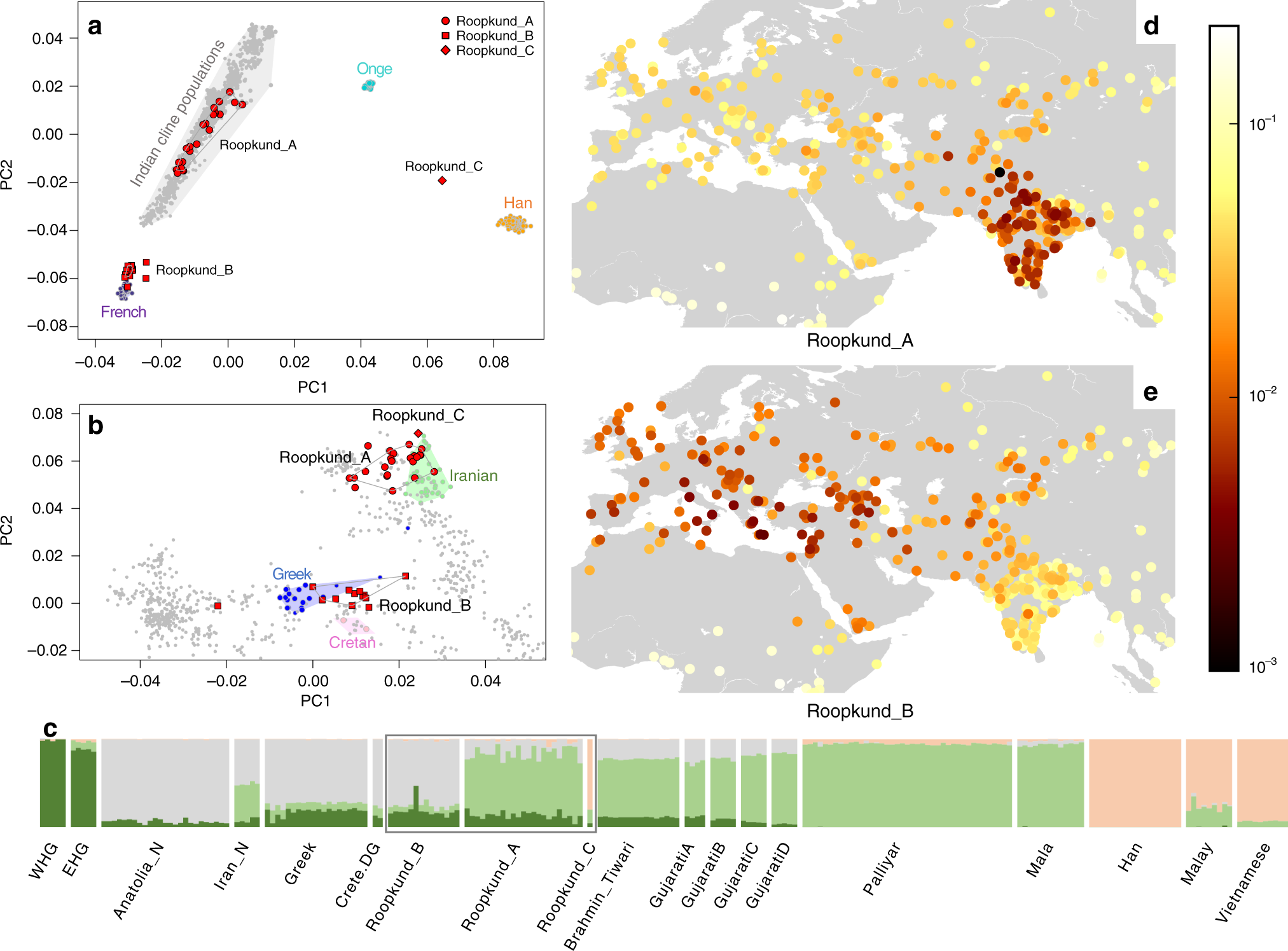Yetos
Regular Member
- Messages
- 5,959
- Reaction score
- 519
- Points
- 113
- Location
- Makedonia
- Ethnic group
- Makedonian original
- Y-DNA haplogroup
- G2a3a
- mtDNA haplogroup
- X2b
Find it yesterday,
it seems that Roopkun, (skeleton lake) on Himalayia had a secret hidden,
wait for genetists to discover it, and get surprised,

'' the second largest group is made up of 14 individuals with ancestry that is most closely related to people who live in the eastern Mediterranean, especially present-day Crete and Greece. ''

Source
https://www.nature.com/articles/s41467-019-11357-9/figures/2
https://www.nature.com/articles/s41467-019-11357-9
https://www.academia.edu/40159432/A..._Lake_reveals_Mediterranean_migrants_in_India
https://www.shh.mpg.de/1438702/roopkund-lake-nayak
http://eurogenes.blogspot.com/2017/11/descendants-of-greeks-in-medieval.html
it seems that Roopkun, (skeleton lake) on Himalayia had a secret hidden,
wait for genetists to discover it, and get surprised,

'' the second largest group is made up of 14 individuals with ancestry that is most closely related to people who live in the eastern Mediterranean, especially present-day Crete and Greece. ''

Source
https://www.nature.com/articles/s41467-019-11357-9/figures/2
https://www.nature.com/articles/s41467-019-11357-9
https://www.academia.edu/40159432/A..._Lake_reveals_Mediterranean_migrants_in_India
https://www.shh.mpg.de/1438702/roopkund-lake-nayak
http://eurogenes.blogspot.com/2017/11/descendants-of-greeks-in-medieval.html

